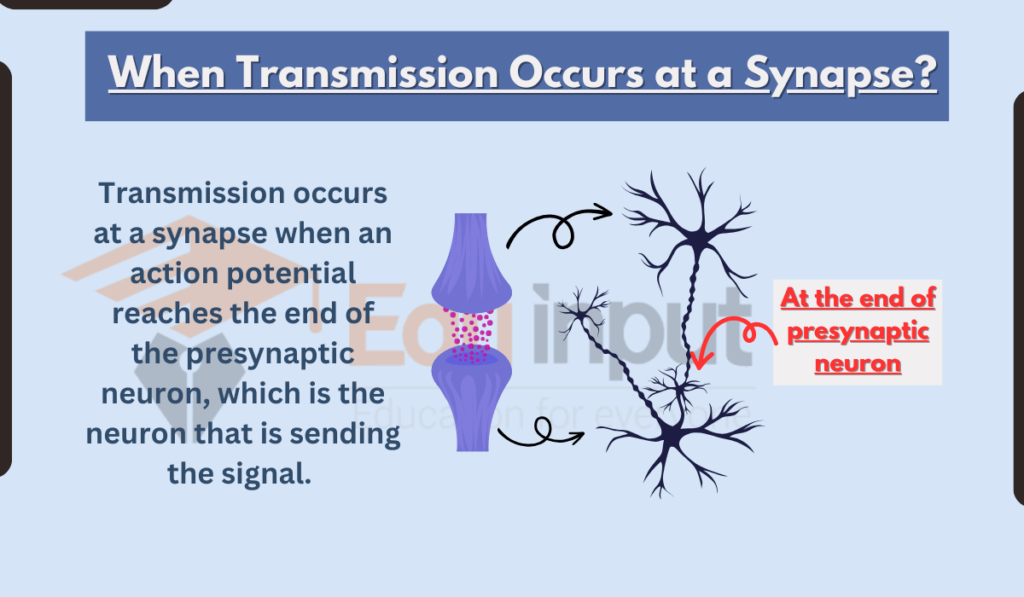When Transmission Occurs at a Synapse?
Transmission occurs at a synapse when an action potential reaches the end of the presynaptic neuron, which is the neuron that is sending the signal.

The action potential causes the release of neurotransmitters from the presynaptic neuron into the synaptic cleft, which is the small gap between the presynaptic neuron and the postsynaptic neuron, which is the neuron that is receiving the signal.
The neurotransmitters then bind to receptors on the postsynaptic neuron. The binding of neurotransmitters to receptors opens ion channels in the postsynaptic neuron. It allows ions to flow into or out of the cell.
This change in the electrical potential of the postsynaptic neuron can either make it more or less likely to fire an action potential.
The neurotransmitters are then cleared from the synaptic cleft by a process called reuptake. In reuptake, the neurotransmitters are taken back up into the presynaptic neuron and recycled.
The process of synaptic transmission is very fast, happening in milliseconds. It is also very efficient, with only a small percentage of the neurotransmitters being lost in the synaptic cleft.
The type of neurotransmitter released, the number of receptors on the postsynaptic neuron, and the strength of the signal from the presynaptic neuron all affect the effect of synaptic transmission.
When transmission occurs at a synapse, neurotransmitter is released by the presynaptic neuron. This is the mechanism by which neurons communicate with each other. It is important for all brain functions, including thinking, feeling, and moving.
Also learn about:

 written by
written by 

Leave a Reply